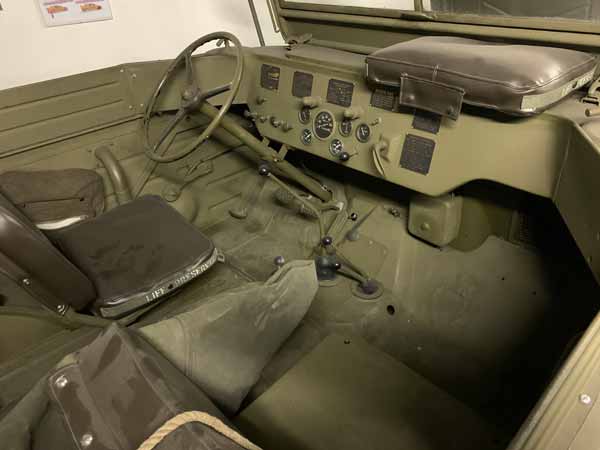Michael’s SuperFinds – significant Aston surprises in a Luxembourg castle
When researching a Rolls-Royce 20HP Cabriolet by Barker (ex-Maharadja of Baroda) in a castle in Luxembourg with my good friend Richard Biddulph, we stumbled across an incredible pair of Aston Martins. To our great surprise, one of them turned out to be the original 1961 DB4 GT Geneva Motor Show car.
With the owner having sadly died, interested parties (ourselves included) were invited to leave bids in sealed envelopes to be opened by a notary under the supervision of the family. That process is still ongoing, with a much-anticipated decision expected to be made within the next month or two.
Naturally, I was keen to know more about the two Aston Martins so I had their histories checked by marque expert Keith Riddington:
The first Aston Martin, a DB4 GT with chassis number 146/L was built on 3 March 1961 and dispatched to Geneva on 7 March 1961, to be displayed at the Geneva Motor Show. After the event the DB4 GT was sold to its first owner, in Switzerland.

Above: DB4 GT chassis number 146/L – the original Geneva show car, as found. It used to be Fiesta red.
In 1965 a DB5 Vantage engine was fitted, with a 5-speed transmission, by Aston Martin Works service.

Above: In 1965 a DB5 Vantage engine was fitted by Aston Works service, but in 2008 the original block was reunited with the car
After several owner changes, the DB4 GT found its way to Charles De La Haye Jousselin in 1993. He had the car restored, including a colour change from Fiesta red to Caribbean blue.
In the period 1998-2008 chassis number 146/L was frequently used in the Tour de France Automobile.
In 2008 the DB4 GT was bought by its last owner. A restoration was started in Switzerland, but the project was finished in Belgium, by Eric Brumenil. The original, matching-numbers engine block was found and re-installed in the DB4 GT. The head was renewed. A period Aston Martin 4-speed transmission instead of the 5-speed DB5 transmission was fitted. In 2018 the completed DB4 GT was registered in Luxembourg.
With the owner seriously ill and wanting to see the car before his death, the DB4 GT was sent back to the castle without work on the clutch being completed.


Above: Chassis number DB4C/1060/L in all its splendour. Goodwood Green with fawn interior.
The other Aston Martin DB4 is a convertible: chassis number DB4C/1060/L. It was built in July 1962 and transported to the Belgian Congo early in August 1962. The first owner was Mr. Jacques Bia from Belgium. The car was finished in a particularly attractive colour combination of Goodwood green paint with fawn interior and soft top.
The Convertible was equipped with the more powerful Special Series (SS) engine – these featured three SU carburettors, a higher compression ratio and larger valves.

Above: Triple SU carbs reveal this to be a Special Series engine
In the period November 1962 – August 1970, the Convertible was serviced by Aston Martin Works Service in Newport Pagnell. All work carried out on the car during this period is recorded in the Aston Martin factory files.
At an unknown date the ownership of 1060/L passed on to Vincent Bia of Overijse, Belgium. It’s very likely that Vincent is the son of Jacques Bia.
In 2005 the Convertible was purchased by its last owner in Luxembourg, who used it sparingly. Information in the owner’s files confirms it is equipped with the SS engine.

Above: While the Astons were a surprise find, the Rolls-Royce 20 HP Tourer by Barker was the reason we had gone to the castle in the first place. Note the Ford Duck parked behind the Rolls.
Of special interest to fans of amphibious vehicles is the Ford Duck parked just behind the Rolls. Apparently, it made its way from Omaha beach in Normandy to Luxembourg before being abandoned by the GIs. For many years it was used to clean the pond in the castle grounds.

Above: Function-first cabin of the Ford Duck, complete with life preservers for seat cushions.




2 comments
Yes Andrew, you are absolutely right. Michael Kliebenstein sure knows his Astons, but we could all do with a brush up on our amphibious vehicles. We appreciate your support.
Porter Press
They are still out there! I do feel compelled to correct you though – no such thing as a Ford Duck. Technically it is a Ford GPA, the amphibious version of the Ford GPW which was the Ford ’built under license ’version of the ubiquitous wartime Willys MB. In service, where the Ford GPW and the Willys MB were collectively known as Jeeps, the GPA was known appropriately as the Seep. The Duck (a corruption of the DUKW vehicle designation) was the amphibious version of the GMC 6 wheel truck, very different to the GPA…..
keep up the good work,
Regards
Andrew
Andrew Douglas
Leave a comment
This site is protected by hCaptcha and the hCaptcha Privacy Policy and Terms of Service apply.